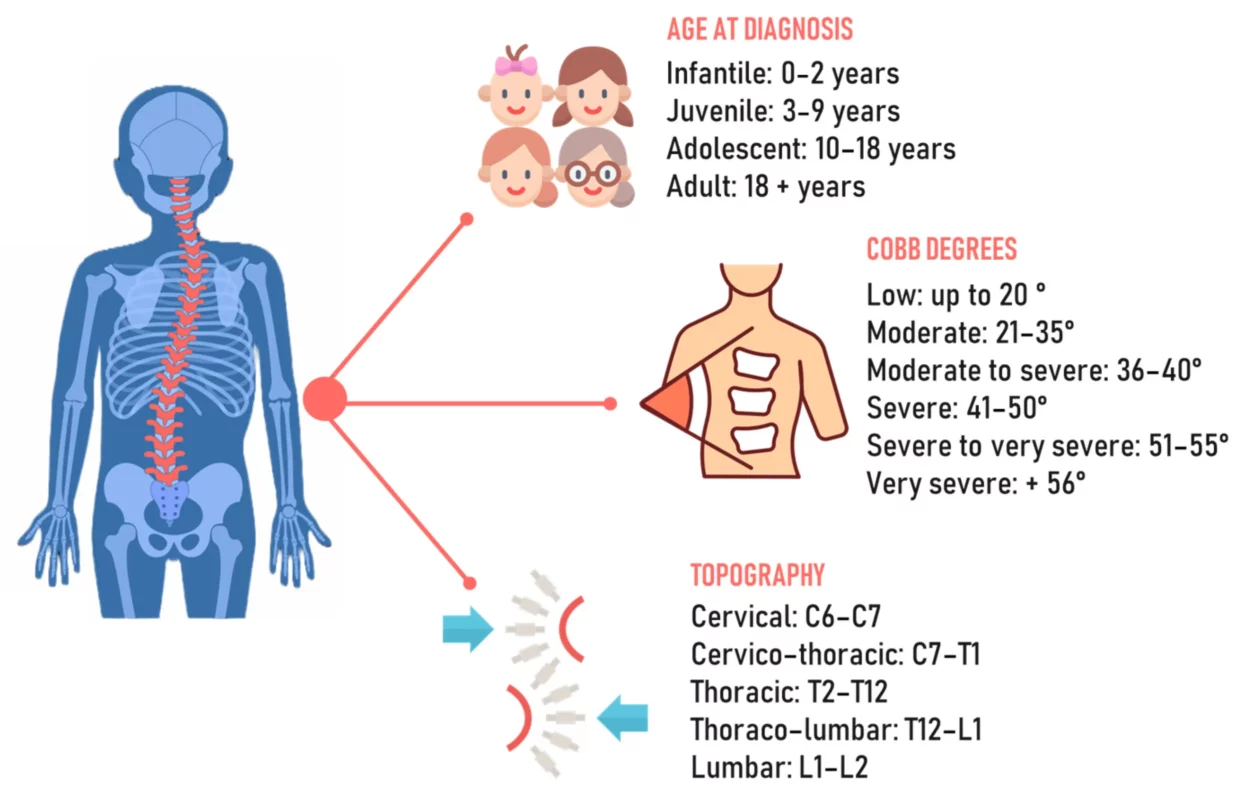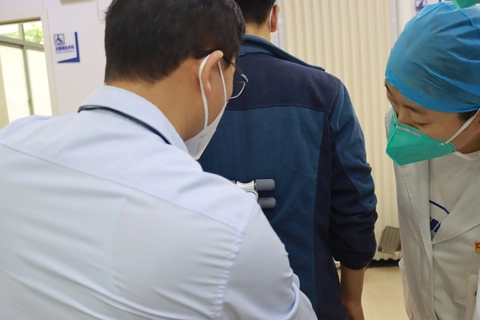What Happens If Scoliosis Is Left Untreated: Scoliosis is a medical condition that affects the curvature of the spine, causing it to curve sideways. It is crucial to understand the potential consequences of leaving scoliosis untreated, as early intervention and treatment can significantly improve outcomes. Neglecting scoliosis can lead to various complications that affect physical health, respiratory function, cardiovascular health, emotional well-being, mental health, and overall quality of life. This article aims to shed light on the impact of untreated scoliosis and emphasize the importance of seeking treatment.

¿Qué es la escoliosis?
Scoliosis is a condition characterized by an abnormal curvature of the spine. Instead of the spine being straight, it curves sideways, forming an “S” or “C” shape. This curvature can occur in any part of the spine, including the upper back (thoracic), lower back (lumbar), or both. Scoliosis can develop during childhood or adolescence, known as adolescent idiopathic scoliosis, or it can be present at birth (congenital scoliosis) or develop later in life due to degenerative changes (adult scoliosis).

Causas y factores de riesgo de la escoliosis
The exact cause of scoliosis is often unknown, referred to as idiopathic scoliosis. However, certain risk factors can increase the likelihood of developing scoliosis. These risk factors include a family history of scoliosis, certain genetic conditions like Marfan syndrome or muscular dystrophy, and certain neuromuscular conditions such as cerebral palsy or spinal muscular atrophy.

Signs and Symptoms of Scoliosis
The signs and symptoms of scoliosis can vary depending on the severity of the curvature. Common signs include uneven shoulders, one shoulder blade that appears more prominent than the other, uneven waist, leaning to one side, and an asymmetrical ribcage. In some cases, scoliosis may cause back pain, muscle stiffness, or fatigue. It is essential to note that scoliosis can progress rapidly during periods of growth, making early detection and treatment crucial.

Complications of Untreated Scoliosis
Leaving scoliosis untreated can lead to various complications that can significantly impact an individual’s health and quality of life. These complications can affect musculoskeletal issues, respiratory function, cardiovascular health, emotional well-being, mental health, and daily activities.
Impact on Physical Health: Musculoskeletal Issues
One of the primary complications of untreated scoliosis is the progression of the spinal curvature. As scoliosis worsens, it can lead to an imbalance in the muscles and ligaments supporting the spine, causing muscle imbalances, joint dysfunction, and postural abnormalities. This can result in chronic pain, limited mobility, and difficulty performing daily activities.
Impact on Respiratory Function
Severe cases of scoliosis can negatively impact respiratory function. As the spine curves, it can compress the chest cavity, reducing lung capacity and impairing the ability to breathe deeply. This can lead to shortness of breath, fatigue, and decreased endurance. In severe cases, untreated scoliosis can even lead to respiratory failure, requiring medical intervention.
Impact on Cardiovascular Health
The abnormal curvature of the spine in scoliosis can also affect cardiovascular health. As the spine twists and compresses the chest cavity, it can put pressure on the heart and lungs, affecting blood flow and oxygenation. This can lead to cardiovascular issues such as decreased cardiac output, increased heart rate, and hypertension. Over time, untreated scoliosis can increase the risk of developing cardiovascular diseases.
Impact on Emotional Well-being and Mental Health
Untreated scoliosis can have a significant impact on an individual’s emotional well-being and mental health. The visible physical deformity caused by scoliosis can lead to self-consciousness, body image issues, and low self-esteem. Adolescents, in particular, may experience social isolation, bullying, and decreased participation in activities they once enjoyed. The emotional toll of untreated scoliosis can also contribute to anxiety, depression, and other mental health disorders.
Impact on Quality of Life and Daily Activities
The physical limitations and emotional distress caused by untreated scoliosis can significantly impact an individual’s quality of life. Chronic pain, limited mobility, and difficulty performing daily activities can lead to a decreased ability to participate in work, school, sports, and social activities. This can result in a reduced overall quality of life and a sense of frustration and dependency on others.
Long-term Effects of Neglected Scoliosis
Qué ocurre si no se trata la escoliosis:If left untreated, scoliosis can progress and worsen over time. Severe cases of scoliosis can lead to severe physical deformity, chronic pain, and disability. The impact on respiratory and cardiovascular function can increase the risk of developing respiratory and cardiovascular diseases. The emotional and mental health consequences can persist into adulthood, affecting relationships, career choices, and overall life satisfaction.
Conclusion: Seeking Treatment for Scoliosis
Understanding the potential consequences of leaving scoliosis untreated highlights the importance of seeking early intervention and treatment. Regular screenings, especially during periods of growth, can help detect scoliosis early, allowing for timely intervention. Treatment options for scoliosis include observation, bracing, and in severe cases, surgery. Early treatment can help prevent the progression of scoliosis, alleviate pain, improve respiratory and cardiovascular function, enhance emotional well-being, and maintain a high quality of life. By seeking treatment for scoliosis, individuals can take control of their health and ensure a better future.
Referencias
- Clínica Mayo. "Escoliosis". https://www.mayoclinic.org/diseases-conditions/scoliosis/symptoms-causes/syc-20352254.
- Asociación Americana de Cirujanos Neurológicos. "Escoliosis". https://www.aans.org/Patients/Neurosurgical-Conditions-and-Treatments/Scoliosis.
- Sociedad de Investigación de la Escoliosis. "¿Qué es la escoliosis?" https://www.srs.org/patients-and-families/what-is-scoliosis.
- Institutos Nacionales de Salud. "Visión general de la escoliosis". https://www.nih.gov/health-information/scoliosis.
- Medicina Johns Hopkins. “Complications of Untreated Scoliosis.” https://www.hopkinsmedicine.org/health/treatment-tests-and-therapies/scoliosis-complications.
- Clínica Cleveland. “Scoliosis: Causes and Risk Factors.” https://my.clevelandclinic.org/health/diseases/21432-scoliosis.
- Healthline. “Signs and Symptoms of Scoliosis.” https://www.healthline.com/health/scoliosis.
- Columna vertebral-salud. “Impact of Untreated Scoliosis on Quality of Life.” https://www.spine-health.com/conditions/scoliosis/impact-untreated-scoliosis.
- Clínica Mayo. “Scoliosis Complications.” https://www.mayoclinic.org/diseases-conditions/scoliosis/diagnosis-treatment/drc-20352257.
- Academia Americana de Cirujanos Ortopédicos. “Scoliosis Treatment and Outcomes.” https://www.aaos.org/Orthopedic-Conditions/Scoliosis.

